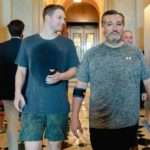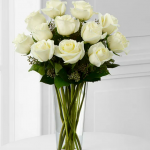
John Lindsay, mayor of New York from 1966 to 1973, personified the resolute confusion with which clubby, liberal WASPs faced the social upheaval of the era. Entering politics as a successful young lawyer, Lindsay represented the wealthy Upper East Side of Manhattan, known as the Silk Stocking District, in Congress from 1958 to 1965. While serving, he compiled a liberal voting record on matters that would have little immediate impact on the residents of his wealthy district. This abstract approach to politics, which had little to do with serving the immediate needs of his constituents, brought Lindsay attention and admiration as a Congressman. It would fail him, however, when he moved into the mayor’s office.

Known for his good looks and aristocratic style (the son of an investment banker, Lindsay graduated from the Episcopal boarding school St. Paul’s and went on to study at Yale), Lindsay became a national celebrity who sought to incorporate the mood of the late 1960s into his administration.


Elected in a three-way race that included National Review founder William F. Buckley, Mayor Lindsay inherited a subway strike that began on January 1, 1966 — his first day in office. During his two terms, Lindsay encouraged “happenings” in Central Park, appeared frequently on “The Tonight Show” with Johnny Carson, and faced racial tensions in the city with a strong chin and a willingness to mingle with ordinary citizens.

Nevertheless, for all the excitement Lindsay’s patrician demeanor aroused, his time in office was largely unsuccessful, characterized by escalating crime, strikes and budget deficits. “We all failed to come to grips with what a neighborhood is,” an aide later remarked. “We never realized that crime is something that happens to, and in, a community.” — TALIESIN
Contributing writer Taliesin prefers a nom de plume due to his position in the Federal Government. He grew up in the South and holds advanced degrees from Harvard and Cornell.
Photos from the LIFE archives.










Whther or not he was a good Mayor, he was a class act.
John Lindsay was a classmate of my father’s at Yale, class of 1944. I will never forget his arrival at their 25th reunion in 1969 when he, his wife Mary, and several of their children arrived by helicopter, dramatically landing in the middle of the Silliman College quadrangle where the reunion was taking place to the jaw-dropping astonishment of his classmates and their families. Talk about an entrance!
Indeed. Except for having the wife and kids in tow, that almost sounds like a James Bond entrance.
hahaha I just inherited that same wrought iron furniture in the third pic!! New cushions have been custom ordered and it’s all getting painted today! how weird
Re: Comment by Reggie —Please contact me. I was at that reunion, as well. I have an idea and would like your input. You may reach me at free77@juno.com.
Regards,
Peter
Still would’ve prefered Buckley over him
Three women have said he gave them crabs. Class act is right!
@ Dan: One of them was Mrs. Brady herself, Florence Henderson.
Oh,John Lindsay,the man that destroyed New York.
Who else would wear khakis on a tour of Harlem?
I think the repeated use of “liberal” in this context is an over-simplification. Lindsay was a liberal Republican, a nearly extinct political creature that once flourished in the Northeast. As Mayor, he got whipsawed from both the left and right. Labor unions tortured him throughout his mayoralty. He won re-election against a Democrat who ran significantly to his right. He did not fit in today’s liberal vs conservative frame, and trying to stick him in it blurs what really happened.
Thanks for the article and love the pics. The NYT book review to which you linked describes a NYC that sounds not too dissimilar from the overall milieu we’re living in now…”New York in the late 1960’s and early 70’s was changing rapidly, growing angrier, more violent, less generous, developing a hard edge. The city, like the country, was going through an extraordinary period of unrest.” Plus ca change…
@Carmelo – If we’re going to pretend that one man destroyed New York, then put the onus on Robert Moses.
About Buckley’s candidacy for Mayor: Supposedly, when someone asked Buckley “What is the first thing you will do, if elected?” he replied without hesitation “Demand a recount.”
CNN needs fact checkers, too.
Unfamiliar with NYC politics, the fact checkers (@whiskeydent and @VEA) provided me important perspectives. So popping off that “CNN needs fact checkers, too” is a non-sequitur of Monty Python proportions. If you’re going to puff your Cornell and Harvard degrees, be prepared for something more than a handshake.
50 years ago, the term “Rockefeller Republican” had meaning and relevance. Conservative regarding defense, communism, economics; Liberal regarding social issues, civil rights, assistance for the poor, open to immigrants. All from a benevolent Patrician perch. Lindsay was the quintessential RR. Unfortunately for him, his Mayoral years coincided with dramatic shifts in the urban political landscape. In short order one had to be either a Conservative or a Liberal and he was caught in the middle. For a satiric understanding of just how out of touch Lindsay and people like him became, read “Radical Chic” by Thomas Wolfe. The story was published in NY Magazine and is available on line if one looks hard enough.
I grew up in the NY metro area, and was becoming aware of “life” by the mid 70’s. I recall the urban decay and feeling that NYC was a 3rd world country. NYC elected Abe Beam in part due to his promises to repair the city. Unfortunately the city effectively declared bankruptcy during his term. Ed Koch was just the right kind of sharp elbowed street fighter, with a City College degree and Democratic politics to turn NYC around. Though if one looks a little deeper at his legacy, he governed more as a “RR” than a traditional NY Liberal. Koch cut the city payroll, lowered taxes and was very sensitive to NIMBY issues when considering community development, and he later endorsed Giuliani. He termed his politics as being a “Liberal with sanity”. While their perspective on issues was fairly close- they could not have been more different on a personal level, and that is what came to matter after the upheaval of the 60s.
It’s interesting that when I wrote that piece 10 years ago, it did not occur to me that referring to Mayor Lindsay’s record as “liberal” would be interpreted with suspicion or hostility. A New York Times article from 1958, when Lindsay was first elected to Congress, noted that Republicans in the Silk Stocking District “may expect to find that his voting record in Congress will be in line with the liberal wing of the Republican party.” And it was. “VEA/AEV”‘s anachronism is not a particularly good point, nor is it really very deep to say that the 17th Congressional district included areas outside of the Upper East Side – it was called the Silk Stocking District because the Upper East Side dominated.
Trying to find little things to disagree with is probably entertaining for some of you, but if you think you can do a better job, feel free – write articles, start a website, etc. Do It Yourself (DIY).
Forget the politics, these are great photos! Would love to see more like it…
@VEA You wrote; “Not only was Lindsay not a ‘liberal’ in the current sense of the term …”
Where does the post say Lindsay was a liberal in the current sense of the term?
The opening sentence reads, “John Lindsay, mayor of New York from 1966 to 1973, personified the resolute confusion with which clubby, liberal WASPs faced the social upheaval of the era.” That can only mean he was a liberal WASP of that era and that is true.
@ VEA, I understand the point you wish to make. That said, you’re contesting the interpretation of facts. This is matter on which reasonable people may disagree and not a matter of fact-checking.
@Taliesin
Ten years ago was pre-2016 — a different world. And today is pre-2020.
The liberal vs conservative frame was forged in 1980 with the election of Ronald Reagan. Republican candidates across the country built their whole campaigns around defining their opponents as a liberals and then wrapping them in negative images. I’ve lived in Texas most of my 60 years, and it was Ground Zero for this approach. I’ve worked professionally against it since 1986.
Today, that frame is wearing thin. In contrasting themselves with Democrats, many Republicans have painted themselves into a right wing corner in which compromise and pragmatism are heresy. The same is true for some Democrats, though our campaign messages are designed to draw voters from the middle to the left instead of the hard right approach.
So if I had read the piece 10 years ago, I would have a problem with it then. My complaint about using the word liberal to define Lindsay was not about accuracy; it was about precision and nuance. Mere fact-checking is not going to catch this kind of thing. Knowledge and understanding will.
@ VEA, you wrote, “… not a liberal WASP in the, say, Kennedy vein …”
In any universe where it is legitimate to say that Kennedy was a WASP, it is also legitimate to say John Lindsay was a liberal.
That Lindsay was a Republican at the time is a matter of fact; that he was a liberal was a matter of opinion, as is, for that matter, what it is to be a liberal.